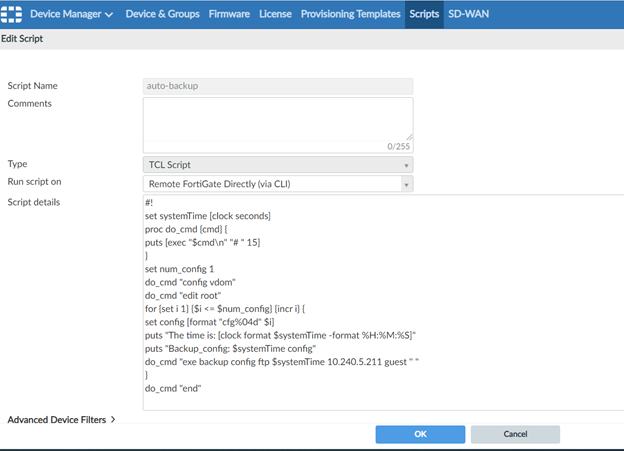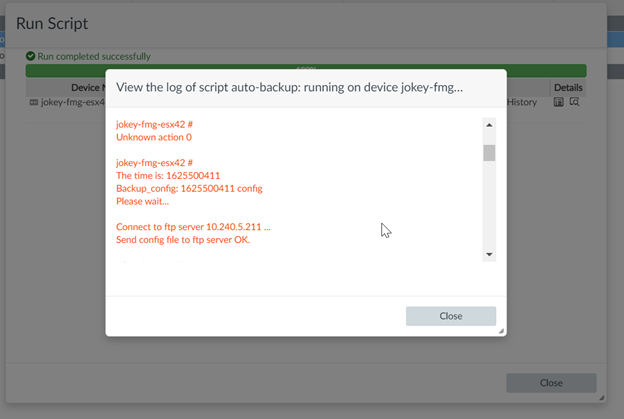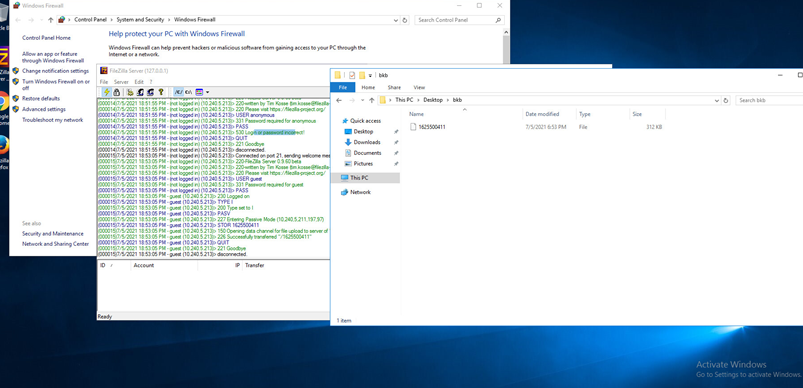- Support Forum
- Knowledge Base
- Customer Service
- Internal Article Nominations
- FortiGate
- FortiClient
- FortiADC
- FortiAIOps
- FortiAnalyzer
- FortiAP
- FortiAuthenticator
- FortiBridge
- FortiCache
- FortiCare Services
- FortiCarrier
- FortiCASB
- FortiConverter
- FortiCNP
- FortiDAST
- FortiData
- FortiDDoS
- FortiDB
- FortiDNS
- FortiDLP
- FortiDeceptor
- FortiDevice
- FortiDevSec
- FortiDirector
- FortiEdgeCloud
- FortiEDR
- FortiEndpoint
- FortiExtender
- FortiGate Cloud
- FortiGuard
- FortiGuest
- FortiHypervisor
- FortiInsight
- FortiIsolator
- FortiMail
- FortiManager
- FortiMonitor
- FortiNAC
- FortiNAC-F
- FortiNDR (on-premise)
- FortiNDRCloud
- FortiPAM
- FortiPhish
- FortiPortal
- FortiPresence
- FortiProxy
- FortiRecon
- FortiRecorder
- FortiSRA
- FortiSandbox
- FortiSASE
- FortiSASE Sovereign
- FortiScan
- FortiSIEM
- FortiSOAR
- FortiSwitch
- FortiTester
- FortiToken
- FortiVoice
- FortiWAN
- FortiWeb
- FortiAppSec Cloud
- Lacework
- Wireless Controller
- RMA Information and Announcements
- FortiCloud Products
- ZTNA
- 4D Documents
- Customer Service
- Community Groups
- Blogs
- Fortinet Community
- Knowledge Base
- FortiManager
- Technical Tip: Use TCL script in FortiManager to s...
- Subscribe to RSS Feed
- Mark as New
- Mark as Read
- Bookmark
- Subscribe
- Printer Friendly Page
- Report Inappropriate Content
Created on
06-05-2016
07:56 PM
Edited on
01-02-2026
12:30 AM
By
![]() Jean-Philippe_P
Jean-Philippe_P
Description
This article describes how to create the script and how to execute it automatically.
Scope
FortiManager.
Solution
- Configure the following CLI settings.
FMG # config system admin setting
(setting) set show_schedule_script enable
(setting) set show_automatic_script enable
(setting) set show_tcl_script enable
(setting) end
- Ensure that SSH is enabled on the communicating port of FortiGate with FortiManager by going to Device Manager -> Select on the FortiGate that the script will run on -> Network -> Interface -> Enable SSH on the port that FortiGate uses to communicate with FortiManager.
- Ensure that the FortiGate Admin credentials within FortiManager is updated by going to Device Manager -> 'Right click' on the FortiGate -> Edit -> Update the username & password fields with valid super_user credentials.
- Navigate from Device manager -> Scripts -> CLI/TCL script and select 'Create new'.
- Create a TCL script as shown in the screenshot using the following script text. If the FortiGate uses a pre-banner, '[exec "a\n" "# " 15]' can be used in the below script instead of TCL line 'puts [exec "$cmd\n" "# " 15]'. Indeed, send 'a' to bypass the pre-banner set pre_banner.
#!
set systemTime [clock seconds]
proc do_cmd {cmd} {
puts [exec "$cmd\n" "# " 15]
}
set num_config 1
do_cmd "config vdom"
do_cmd "edit root"
for {set i 1} {$i <= $num_config} {incr i} {
set config [format "cfg%04d" $i]
puts "The time is: [clock format $systemTime -format %H:%M:%S]"
puts "Backup_config: $systemTime config"
do_cmd "exe backup config ftp $systemTime <FTP_IP> guest '' "
}
do_cmd "end"

set systemTime [clock seconds]
proc get_sys_status aname {
upvar $aname a
puts [exec "#This is an example Tcl script to get the system status of the FortiGate\n" "# " 15 ]
set input [exec "get system status\n" "# " 15 ]
# puts $input
set linelist [split $input \n]
# puts $linelist
foreach line $linelist {
if {![regexp {([^:]+):(.*)} $line dummy key value]} continue
switch -regexp -- $key {
Version {
regexp {FortiGate-([^ ]+) ([^,]+),build([\d]+),.*} $value dummy a(platform) a(version) a(build)
}
Serial-Number {
set a(serial-number) [string trim $value]
}
Hostname {
set a(hostname) [string trim $value]
} }
}
}
get_sys_status status
puts "This machine is a $status(platform) platform."
puts "It is running version $status(version) of FortiOS."
puts "The firmware is build# $status(build)."
puts "S/N: $status(serial-number)"
puts "This machine is called $status(hostname)"
puts "Backup_config: $systemTime config"
proc do_cmd {cmd} {
puts [exec "$cmd\n" "# " 15]
}
set num_config 1
for {set i 1} {$i <= $num_config} {incr i} {
set config [format "cfg%04d" $i]
puts "The time is: [clock format $systemTime -format %H:%M:%S]"
do_cmd "exe backup config ftp $status(hostname)$systemTime a.b.c.d admin password"
}
do_cmd "end"
This machine is a 60E-POE platform.
It is running version v6.4.2 of FortiOS.
The firmware is build# 1723.
S/N: FG60EPTK1-----7
This machine is called Freebox-FortiGate-60E-POE
Backup_config: 1600764484 config
The time is: 1600764484
exe backup config ftp Freebox-FortiGate-60E-POE1600-----4 a.b.c.d admin password
Please wait...
- Select the script name created, choose Schedule Script, and choose the specific time to execute.



On FortiGate:
diagnose debug application fgfm 255
diagnose debug console timestamp enable
The Fortinet Security Fabric brings together the concepts of convergence and consolidation to provide comprehensive cybersecurity protection for all users, devices, and applications and across all network edges.
Copyright 2026 Fortinet, Inc. All Rights Reserved.